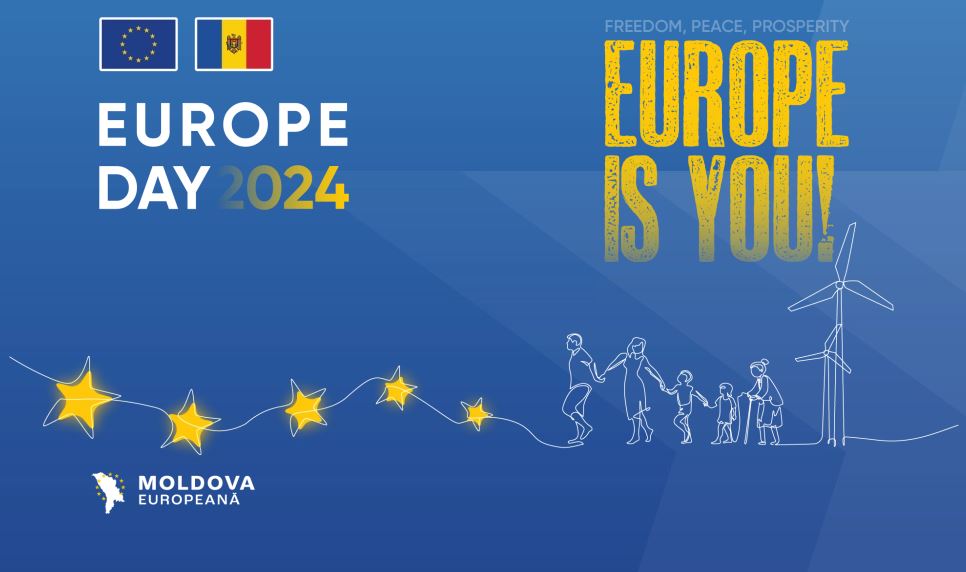  Events Archive Events Archive
The program of Europe Day 2024 at NMHM
May 7-10, 2024
 07.05.2024, 12.00 - "MALURI", offered by the EU program "Confidence Promotion Measures" 07.05.2024, 12.00 - "MALURI", offered by the EU program "Confidence Promotion Measures"
The documentary film inspired by real events, which brings together dozens of actors from both banks of the Prut. The film also tells the history of the villages that had the largest Jewish fair in Moldova - Rașcov and Vadul-Rașcov. "Best Feature Documentary" and "Best Cinematography" are the first two awards won by the documentary "Maluri" made by Telefilm Chisinau.
Directed by: Lucia Tăut, 2021, Moldova, 70 min., documentary film, in Romanian.
Trailer: https://www.youtube.com/watch?v=p0BzxZf8tEY 08.05.2024, 12.00 - "A VILLAGE DEFENDS ITSELF", offered by the Embassy of Austria in the Republic of Moldova.
The film depicts the last days of World War II, Gauleiter Eigruber ordered the dynamiting of the salt mine. Stolen art treasures are stored there. The villagers object. It received the award for the best film broadcast on TV.
Director: Gabriela Zerhau, 2019, 1 h 47 min., drama, in German, subtitles in English and Romanian.
Trailer: https://www.youtube.com/watch?v=7l80GKRe_9M 08.05.2024, 14.00 - "HALLSTATT - A LIFE BETWEEN ROCKS AND LAKE", offered by the Embassy of Austria in the Republic of Moldova.
The film presents the Austrian region of Hallstatt-Dachstein with breathtaking landscapes, crystal clear lakes and deep historical relevance. During the Hallstattian period, 2,500 years ago, the Celtics built an empire on the region's ancient salt mines. Using the latest techniques, the outstanding director of nature photography, Wolfgang Thaler, brings this fascinating region to life.
Directed by: Wolfgang Thaler, 45 min., documentary film, English language.
Trailer: https://www.youtube.com/watch?v=VKzKSP6Tx0c 10.05.2024, 12:00 p.m. - "IN THE NAME OF THE EARTH", offered by the Polish Institute in Bucharest.
The film presents the end of the century. 19th century, a village divided by gossip, quarrels and fights for land. The beautiful 19-year-old Jagna, a free spirit who breaks out of the community patterns, becomes the center of attention when her family forces her to marry Boryna, an influential and wealthy widowed landowner. But Jagna is in love with Antek, Boryna's son, and to live this love the young woman will break all the rules and social standards of the time.
The film is an adaptation of the novel "The Peasants" by Władysław Reymont, winner of the Nobel Prize for Literature. The film was Poland's submission to this year's Oscars and is made of approximately 40,000 frames entirely painted in oil, in collaboration with over 100 visual artists
Directed by: DK Welchman and Hugh Welchman, 2023, Poland, 1h 54 min., animated film, drama, history, Romanian subtitles.
Trailer: https://www.youtube.com/watch?v=W3u03Exe260
|
 31 August 1989 St., 121 A, MD 2012, Chisinau, Republic of Moldova
31 August 1989 St., 121 A, MD 2012, Chisinau, Republic of Moldova








 07.05.2024, 12.00 - "MALURI", offered by the EU program "Confidence Promotion Measures"
07.05.2024, 12.00 - "MALURI", offered by the EU program "Confidence Promotion Measures"








































